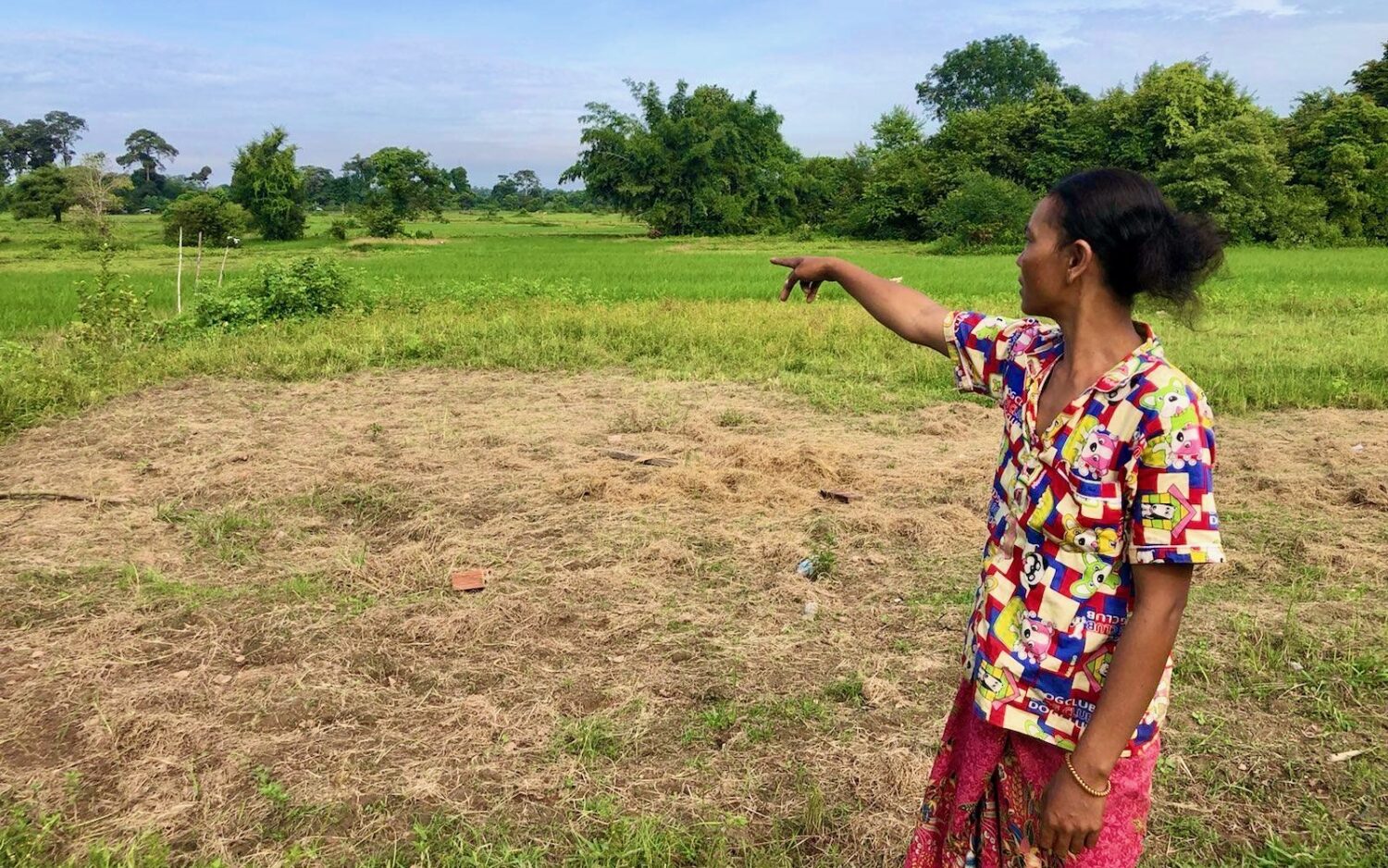Kim Yang was almost asleep on the edge of his Mondulkiri rice farm one evening in February when he was jolted awake by flashlights. It was 11 p.m., and he planned to get a few hours of rest at the plantation rather than drive the 5 km back home.
The flashlights belonged to a group of Environment Ministry officials who swarmed the half-hectare plot and handcuffed him. They confiscated Yang’s phone and took him to the local ministry office, saying that he had acted illegally in working the land.
As part of the indigenous Bunong community living between Keo Seima Wildlife Sanctuary and Phnom Prich Wildlife Sanctuary, the family’s plot provides their main source of food and has belonged to them for generations. Located within walking distance of houses and other small subsistence farms, they had never received a warning about it before.
“We still wonder what we did wrong,” said Pyernh Mith, Yang’s wife. “It’s our ancestral land. They handcuffed him like a killer.”
Yang’s arrest is one of several incidents over the past year reinvigorating frustration in the remote and largely Bunong communes of Chung Plas and Memang. Surrounded on both sides by protected forestland, residents say a five-year-old land dispute with the Environment Ministry over where they are allowed to grow food has escalated since last summer, as officials have destroyed crops, arrested people and demanded high payments to continue farming.
In June, about 50 Bunong families in Memang’s Pu Nhav village signed a letter asking for district officials’ help in reconsidering zoning boundaries but have not received a response, a community leader said. During a commune meeting on Aug. 2, villagers again asked local officials in person to intervene.
After Yang’s arrest, Environment Ministry officials at first requested 10 million riel, or about $2,500, for his release, the family said. They negotiated the price down to $1,000 while Mith begged all her neighbors and the village chief to pool together the money as a loan.
Six months later, in debt to their neighbors, the family is still farming on the same plot. “If we don’t do farming, we have nothing to eat,” Mith said.
‘I Have No Idea What the Law Is’
Bunong community leader Miv Khem, 29, who like his neighbors in Memang commune relies on subsistence rice farming, dates the start of the dispute to 2017, when management of both the Keo Seima and Phnom Prich wildlife sanctuaries were transferred to the Environment Ministry.
Protected areas are divided into four zones, with the least-restrictive “community” zones allowing farming and more-restrictive “sustainable use” zones allowing small-scale harvesting such as resin collection. In Chung Plas and Memang, the communes’ core villages fall mostly within Phnom Prich and are a mix of community and sustainable use zones, according to a map mounted in the Memang commune hall.
A spokesperson for the World Wildlife Fund, which supports management of Phnom Prich, said that the zoning was approved in 2017. The zoning on the Keo Seima side is not finalized, with drafts for the zoning of areas near Chung Plas and Memang communes likewise containing both community and sustainable use zones, according to a spokesperson for the Wildlife Conservation Society.
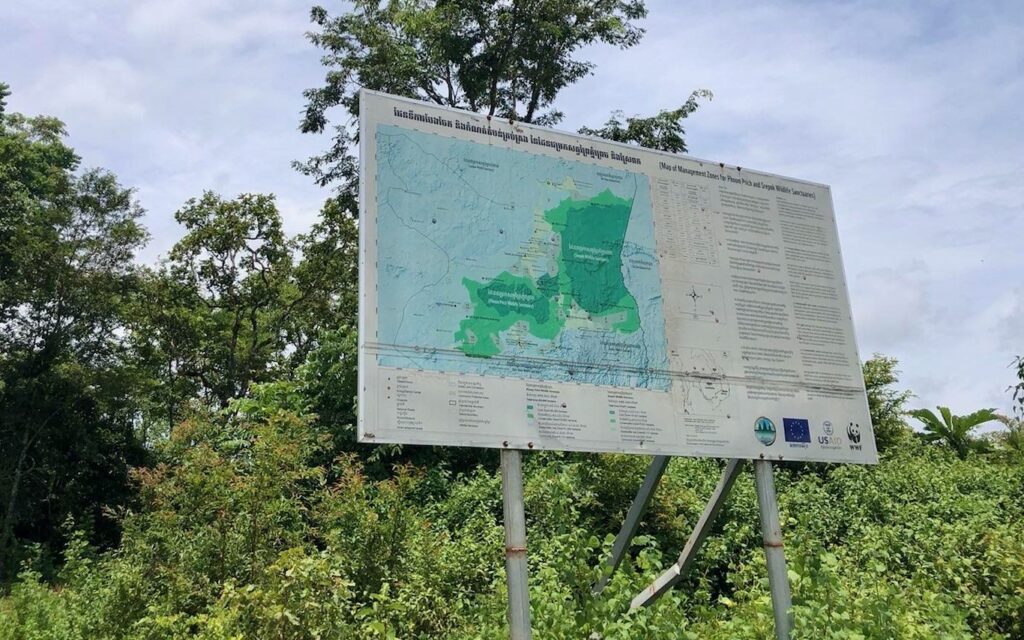
However, residents say that the zones’ borders are changed and enforced at ministry workers’ whims. Others acknowledge their land is located within the restrictive sustainable zone but say it is their only means for survival.
“I have no idea what the law is,” said Sun Lee Choern, 48, who lives in Pu Char village and said she was approached by gun-toting officials on her land two years ago and threatened with arrest before they later told her she could, in fact, farm there after all. “There’s no exact separation from where you can farm on or what’s part of the wildlife protection areas.”
A local Chung Plas Environment Ministry office was empty when visited by reporters on Aug. 2. A spokesperson for the Environment Ministry and the provincial environment department director Keo Sopheak did not respond to requests for comment.
More confusion and fear spiked starting last summer, when ministry workers began patrolling the communes on a near-daily basis and claiming some areas as protected for the first time, residents said. Don Chron, a 47-year-old mother of three, was warned alongside seven other Bunong families to stop using shared land where they grew bananas, rice and mangoes for daily food on about 40 meters each side.
With no other land, “we had no choice” but to keep farming, she said. Then one day last August, the families saw fresh moto tracks in the mud cutting directly across the rice field that the ministry had used before to reach their plot. They followed the tracks to see that their crops had been destroyed.
Since then, Chron has taken to collecting resin and selling it at the market, making 15,000 riel, or about $3.75, on a good day. The family eats mostly kdouch, a root vegetable.
“We just pity our kids,” she said. “We look at them, and a tear comes.”
‘They’re Just Looking for Money’
Although Chung Plas and Memang are made up of mostly Bunong people who resettled in their ancestral homes after the Khmer Rouge, newer Khmer and Cham villagers said they have experienced similar problems. Koy Lei, 52, has been cultivating limes, cashews and papaya for sale on a strip of land about 150 meters on each side in Pu Nhav village since 2007 when he bought it from Bunong neighbors.
There was no sign his land was contested until spring 2021, when cadastral officials came to measure it, he said. Three months later, Environment Ministry officials destroyed his crops — prompting him to complain to the district and attend a meeting with the ministry where he was told for the first time they considered his land part of the sustainable use zone. “I don’t know why they changed their mind” after years, he said.
To make it through this year, he took out a 5 million riel, or $1,250, bank loan and sells snacks from the small storefront in front of his house.
“I earn nothing,” he said. “If they don’t allow me to farm on that land, I have nothing to do.”
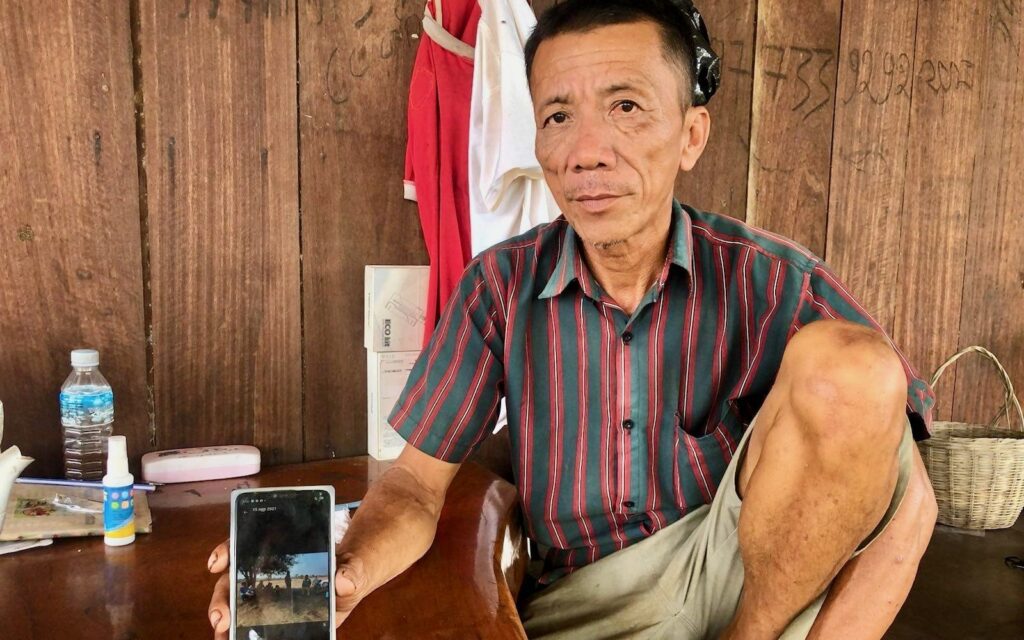
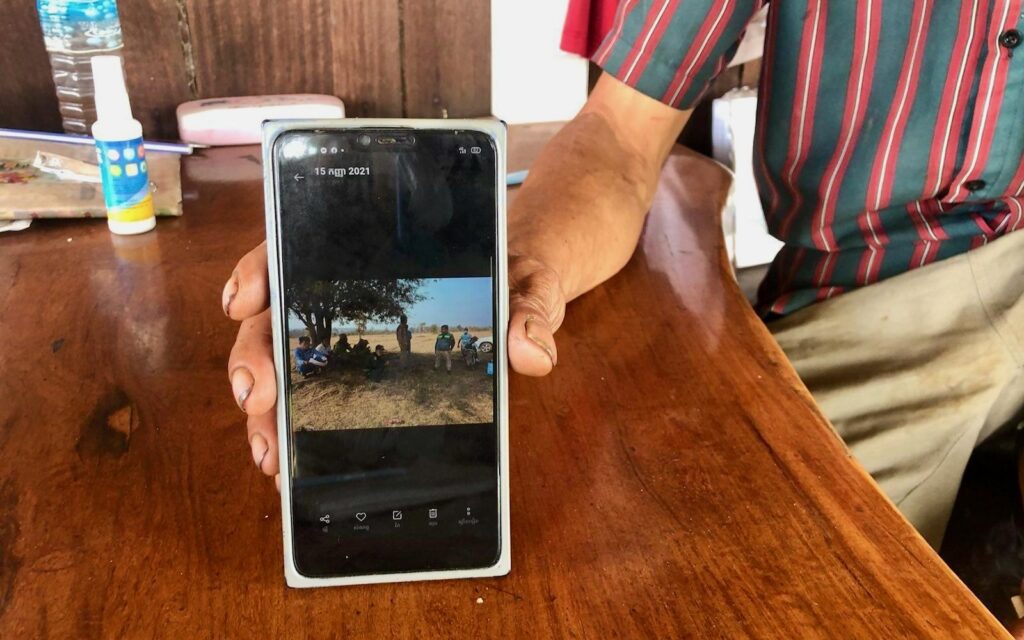
Memang commune chief Chan Samen said that he has asked district authorities for help in multiple cases including Lei’s, but it hasn’t led to any changes. At a recent meeting, authorities told him to “just do the farm in hiding.”
“If we don’t have land and crops, how could we reduce poverty?” he said. “At this point, I don’t know how to solve it.”
Sann Sary, who is ethnic Cham and heads the community forest patrol group for Chung Plas commune, said that his brother was among several arrested last year while working as hired help on a small rice farm near Pu Tong village. The demand for his release — and to keep working on the land — was 4 million riel, or $1,000, after negotiating the price down, Sary said. The landowner ultimately paid the fee the next day.
At least two more people have been arrested in the past five years and ordered to pay $2,000 for release, according to one of the arrestees and multiple villagers.
“These people that accuse us of committing an offense, [like] clearing our farms, these people are only looking for money,” he said.
“Why are the people with excavators not arrested?” he added, referring to heavy machinery used to clear commercial farms. “Why the people who only use axes?”
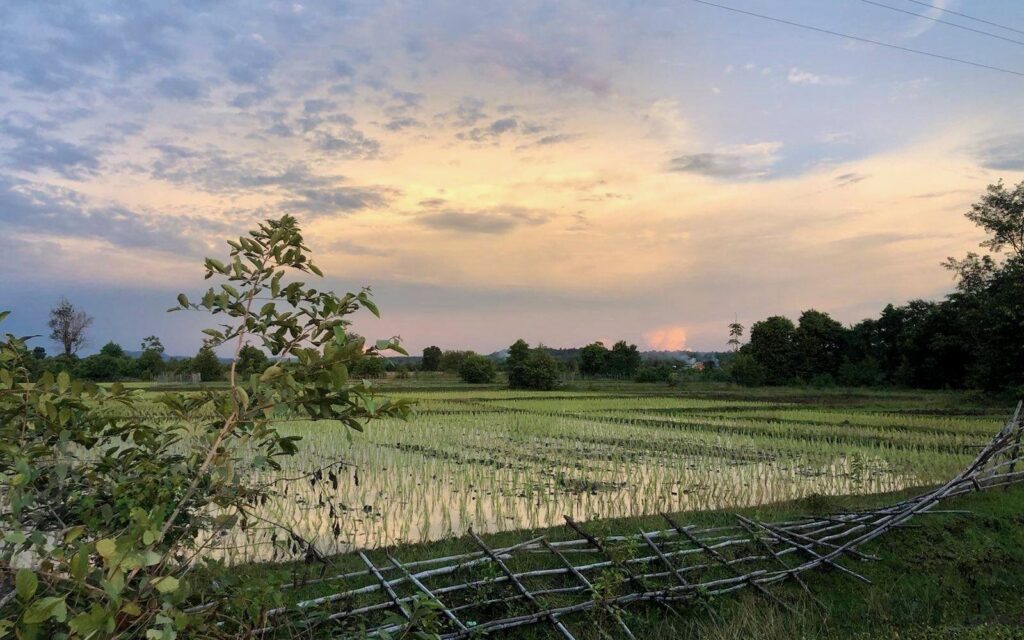
Seeking Intervention
After his $1,000-dollar arrest in February, Yang and two relatives had to thumbprint a document without knowing what it said. A few months later, MoE officials visited him again at the plot. This time, they were told to keep up the “good work.”
With “everyone scared” of arrest throughout the two communes, Yang’s wife Mith spoke her mind to an MoE official at a community meeting in March, calling them “thieves,” she recalled. “They just laughed,” she said.
Even residents’ backup plan of collecting resin has become risky. A Chung Plas woman, who did not want to share her name for fear of arrest, said that her aunt was fined $125 for harvesting resin near her home — more than 10 days of income. After her aunt’s experience, the woman said she only collects resin “in hiding.”
Miv Khem, the Bunong community leader, is still hopeful for an intervention. In June, about 50 newly married Bunong couples sent representatives to deliver a letter to district officials, asking to carve up the land differently and for clarity around the community zone. At another community forum on August 2, Khem said, local officials said they would consider raising the problems to their superiors.
“The community’s problem is dependent on them — the powerful who can solve this for us,” Khem said.
This article was updated at 12:27 p.m. on August 12 to correct that Koy Lei grows limes.


